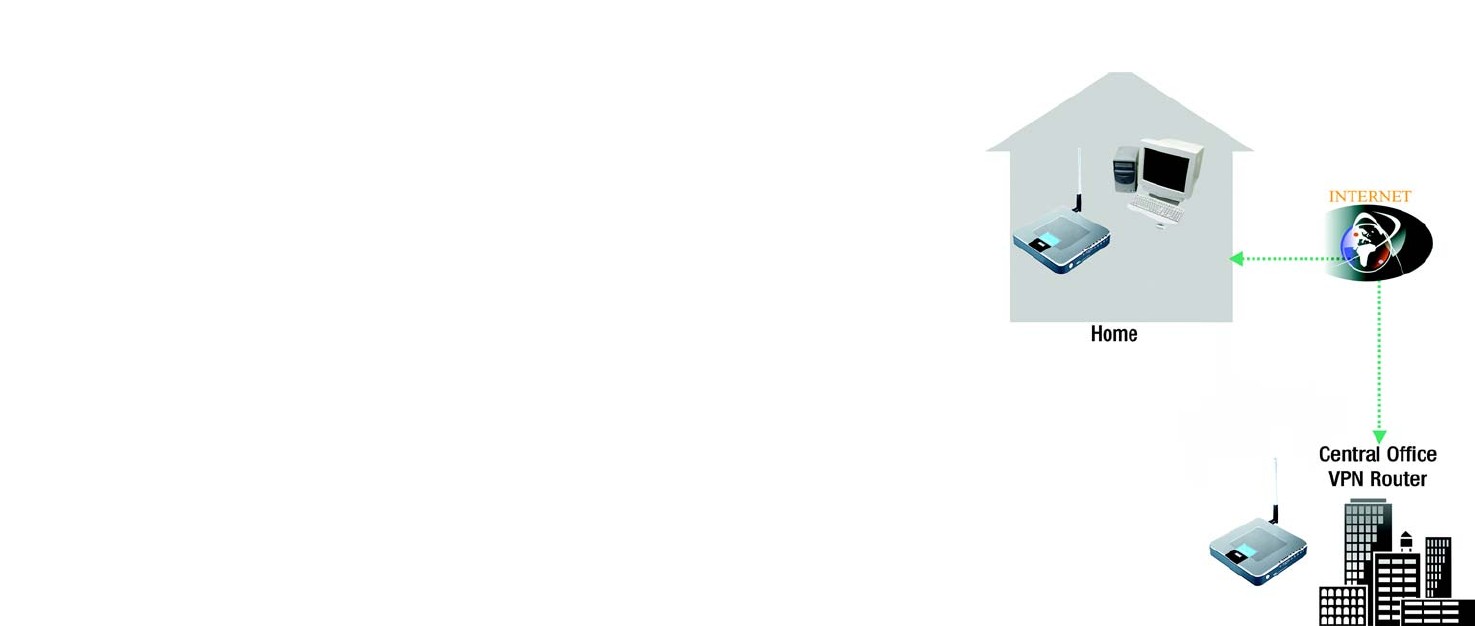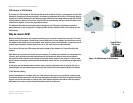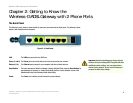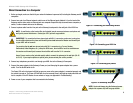
4
Chapter 1: Planning Your Network
Why do I need a VPN?
Wireless-G ADSL Gateway with 2 Phone Ports
VPN Gateway to VPN Gateway
An example of a VPN Gateway-to-VPN Gateway VPN would be as follows. At home, a telecommuter uses his VPN
Gateway for his always-on Internet connection. His Gateway is configured with his office's VPN settings. When he
connects to his office's Gateway, the two Gateways create a VPN tunnel, encrypting and decrypting data. As VPNs
utilize the Internet, distance is not a factor. Using the VPN, the telecommuter now has a secure connection to the
central office's network, as if he were physically connected.
For additional information and instructions about creating your own VPN, please visit Linksys’s website at
www.linksys.com or refer to Appendix C: Configuring IPSec between a Windows 2000 or XP computer and the
VPN Gateway.
Why do I need a VPN?
With the flexibility that comes with computer networking, there is also an increased risk in security. This is why
firewalls were first introduced. Firewalls help to protect data inside of a local network. But what do you do once
information is sent outside of your local network, when emails are sent to their destination, or when you have to
connect to your company's network when you are out on the road? How is your data protected?
That is when a VPN can help. VPNs secure data moving outside of your network as if it were still within that
network.
When data is sent out across the Internet from your computer, it is always open to attacks. You may already have
a firewall, which will help protect data moving around or held within your network from being corrupted or
intercepted by entities outside of your network, but once data moves outside of your network - when you send
data to someone via email or communicate with an individual over the Internet - the firewall will no longer protect
that data.
At this point, your data becomes open to hackers using a variety of methods to steal not only the data you are
transmitting but also your network login and security data. Some of the most common methods are as follows:
1) MAC Address Spoofing
Packets transmitted over a network, either your local network or the Internet, are preceded by a packet header.
These packet headers contain both the source and destination information for that packet to transmit efficiently.
A hacker can use this information to spoof (or fake) a MAC address allowed on the network. With this spoofed
MAC address, the hacker can also intercept information meant for another user.
Figure 1-3: VPN Gateway-to-VPN Gateway


















